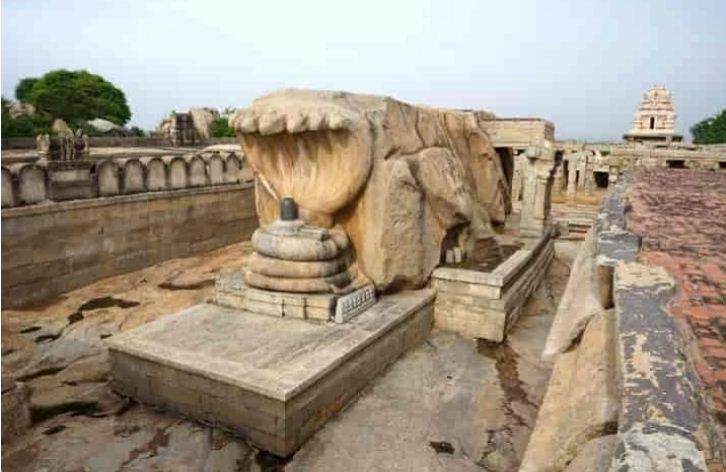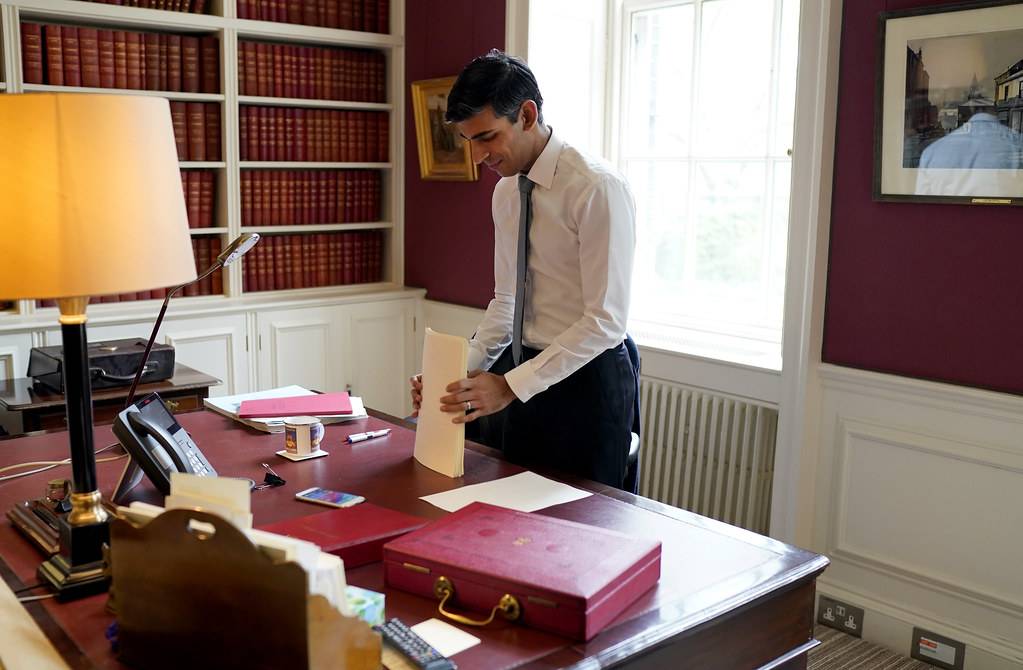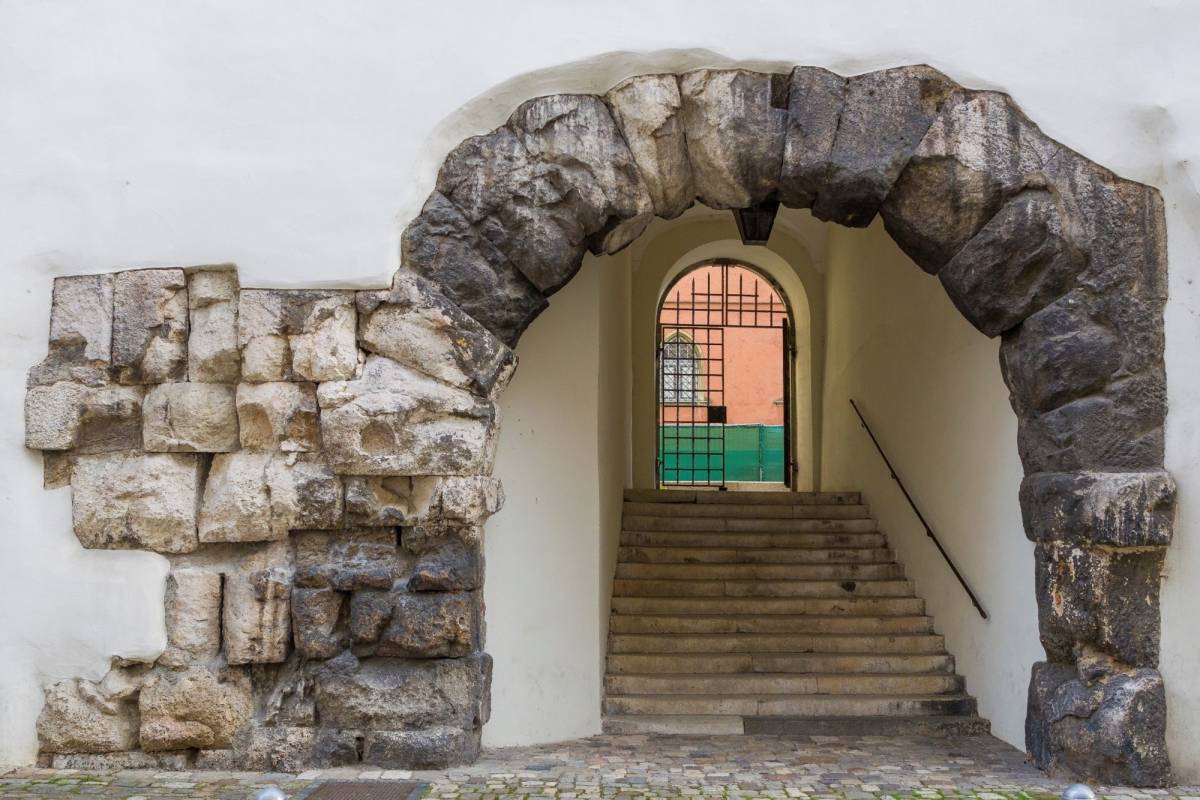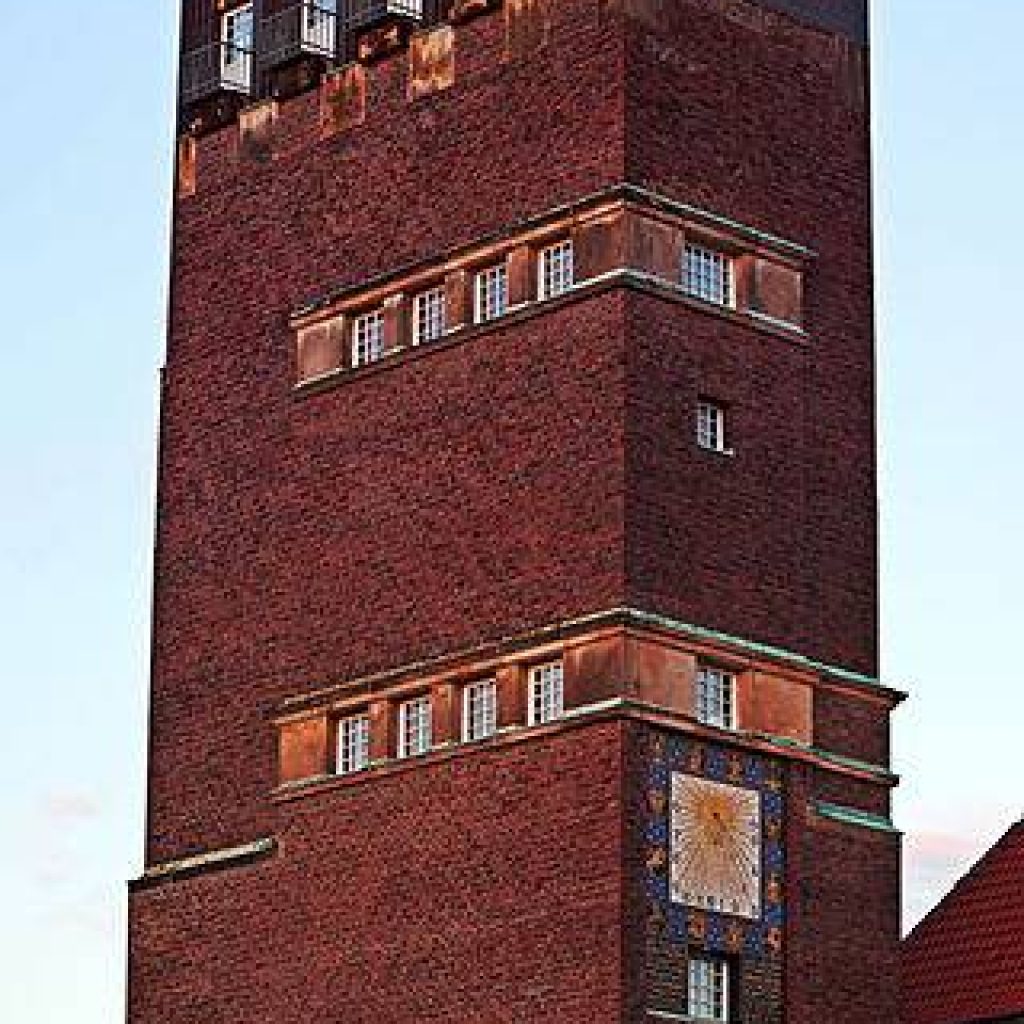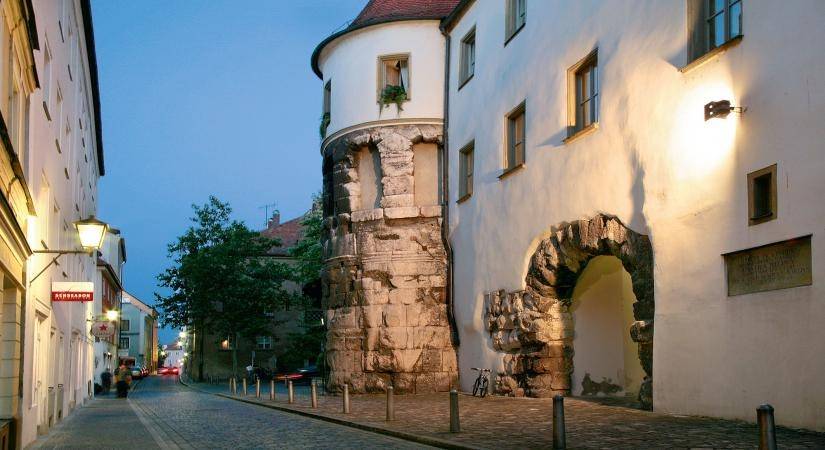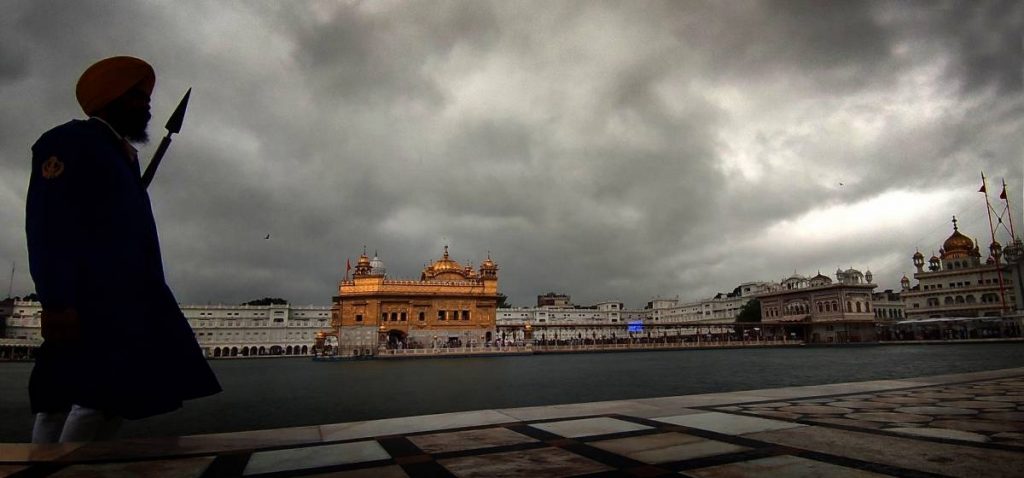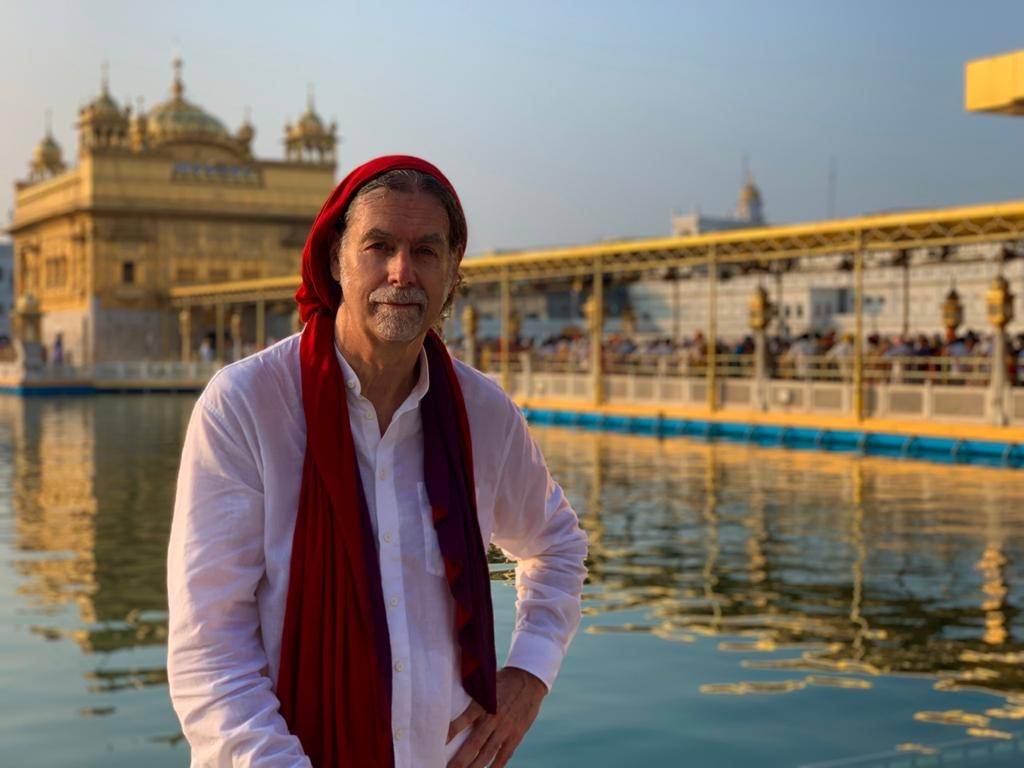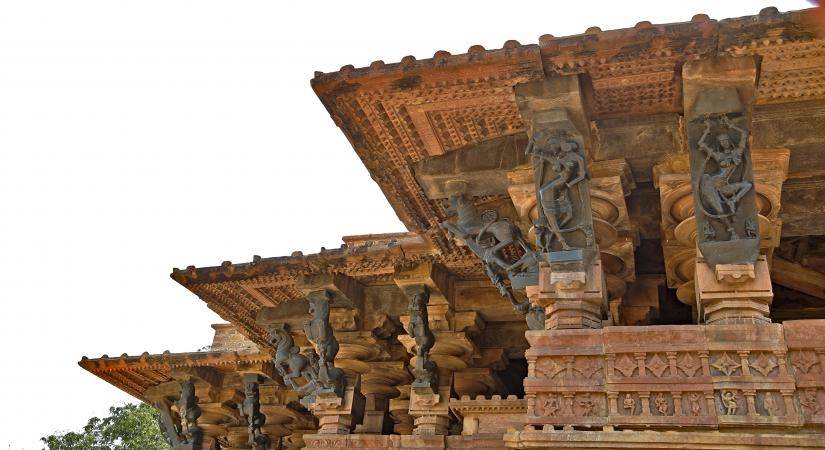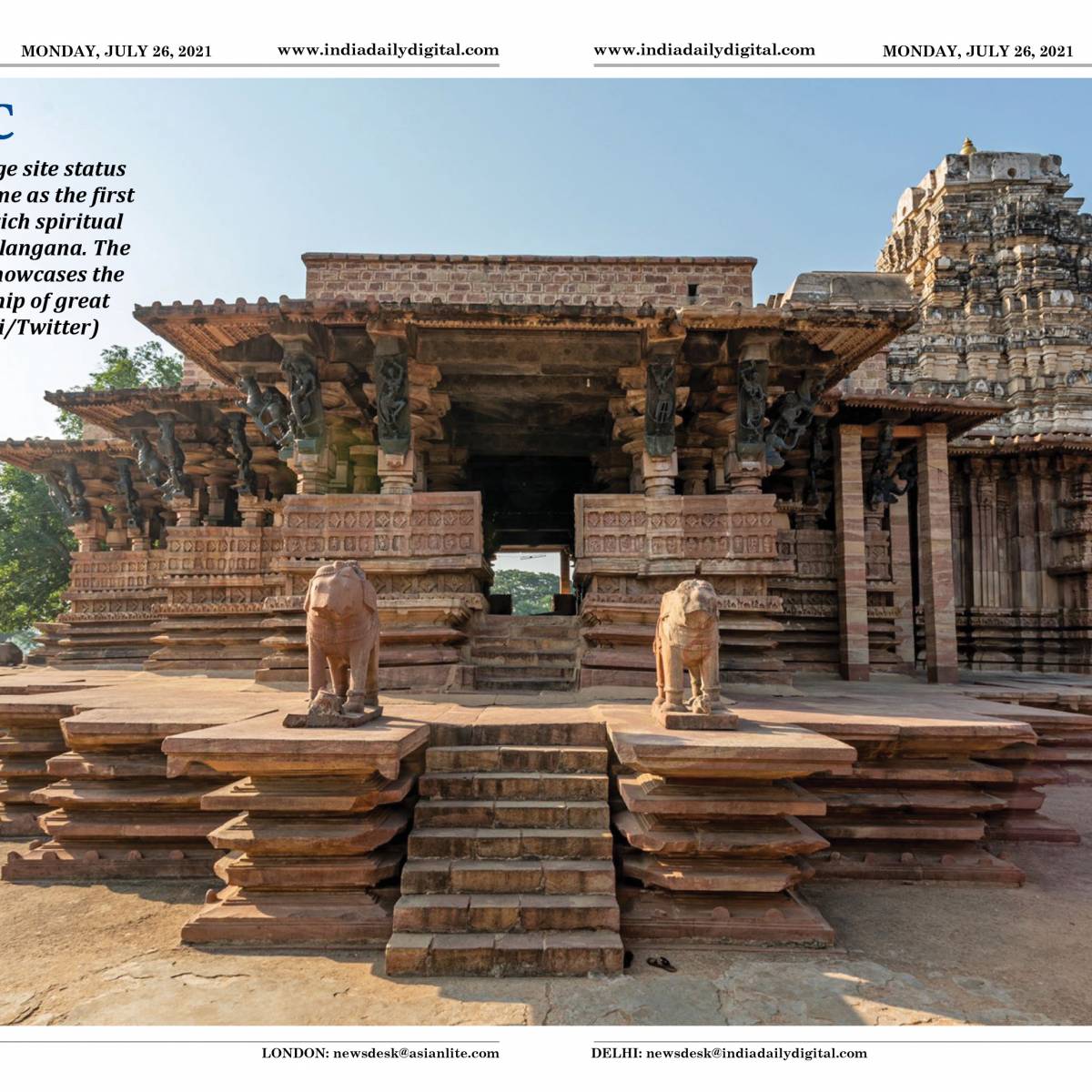Diwali on the Square served as an inspiration to many as they received a dash of culinary ideas and glamour with the presence of the renowned chef, Chetna Makan…reports Asian Lite News
London recently witnessed a spectacular celebration of Diwali on Trafalgar Square- an annual event on the London calendar that gets grander with each passing year. An enthusiastic crowd of over 60,000 people dressed in their finest, had brought along their festive spirits despite the quintessential English rain. Amongst the grey weather, one could see the bright blues and yellows of TRS. The event commenced with energetic dance performances and Garba routines, which were enjoyed by the crowd. The Mayor of London joined the joyous festivities too, bringing along the sun with him, ensuring the perfect weather for a day filled with food and merriment.
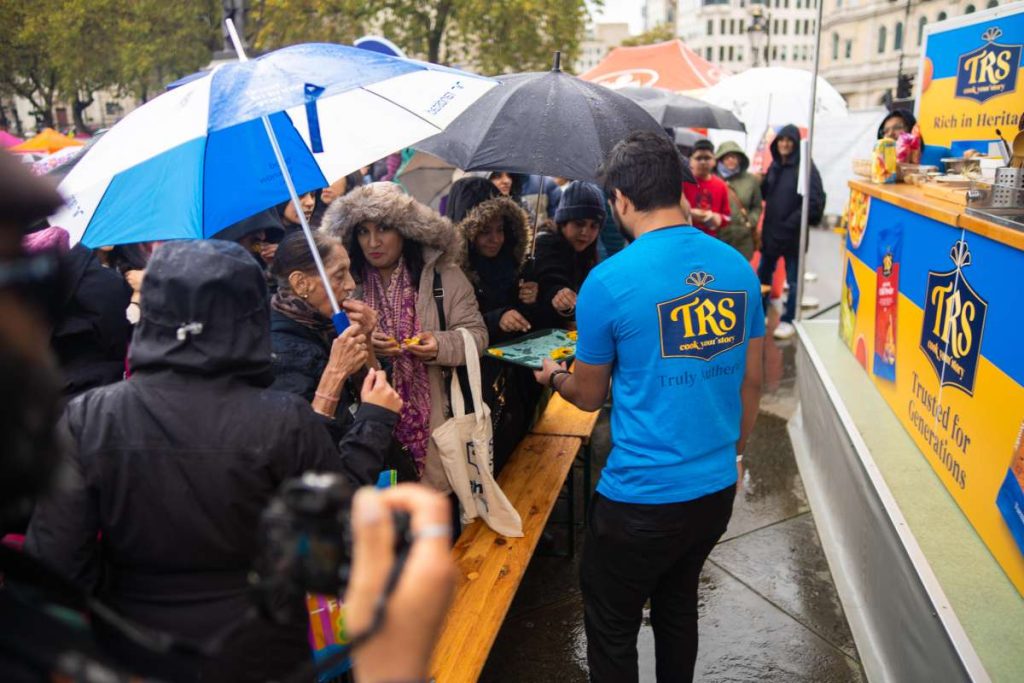
In the heart of this magnificent celebration, TRS played an essential role, seamlessly blending traditions, and flavours to create a relishing experience for all who came. It is rooted deeply in its core values of South Asian culture and continues to be a pillar for the community living away from their homes. TRS brings the essence of South Asian cuisine to kitchens worldwide, serving to the palate of every generation in one plate.
Diwali on the Square served as an inspiration to many as they received a dash of culinary ideas and glamour with the presence of the renowned chef, Chetna Makan. A successful author of three cookbooks, a maestro of all things cooking and a baking aficionado – Chetna Makan cooked some delicious recipes using TRS’s fine semolina, gram flour, and moong dal. From semolina vada to Bread Pakoras, she cooked just the right dishes to warm one’s soul on a rainy day.
“I had a great time at the Diwali mela this year. Even though the day started with rain it was so lovely to see so many people come and make it a special day. There was an amazing range of delicious Indian food and the performances were outstanding. It was a joy to work with TRS and to meet so many people that day.” Chetna Makan

“TRS served a fun twist to the classic salted popcorn with its own TRS kernels spiced with TRS chilli powder, another batch sweetened with TRS cinnamon powder, and then another Desi Delight popcorn that had many queuing up to get a taste of -all because of the magic of TRS All Seasoning powder. TRS’s claw machine was a huge success amongst children and adults alike, who displayed childlike wonder for the TRS goodies they each ‘clawed’ their way to win.” -Stephanie Rose O’Riordan, TRS Marketing Manager

This event also saw the presence of notable influencers, including Monisha Bharadwaj, Sharmin Choudhury, Sunia Imran, who added an extra touch of glamour to the celebration. From the beautiful statue of Lord Ganesha to the engaging Diwali Puppet acts and song performances on stage, ‘Diwali on the Square’ proved to be a day of tradition, laughter, and joy to all. The spirit of Diwali, which signifies the triumph of good over evil, was symbolically reflected in the smiles and warmth shared by the crowd.
As the festival of Diwali approaches, we extend our warmest wishes to everyone. May this festival fill your homes with sweets, savouries, and smiles! Happy Diwali!
ALSO READ-Yoshinori Mizutani Unveils Exquisite Menu at Shangri-La Bengaluru



